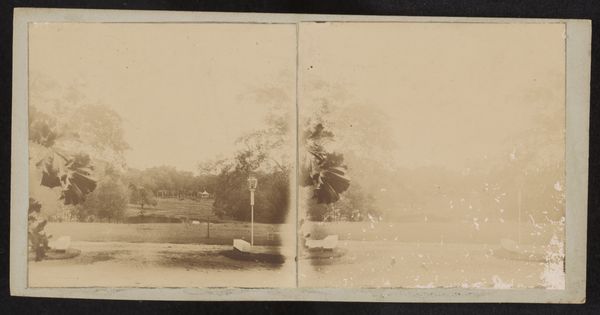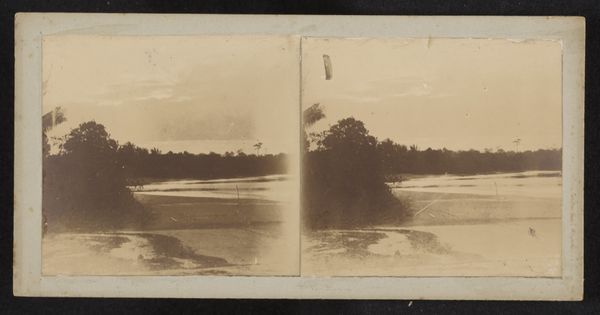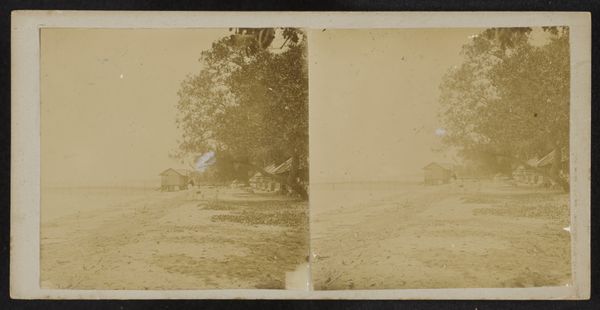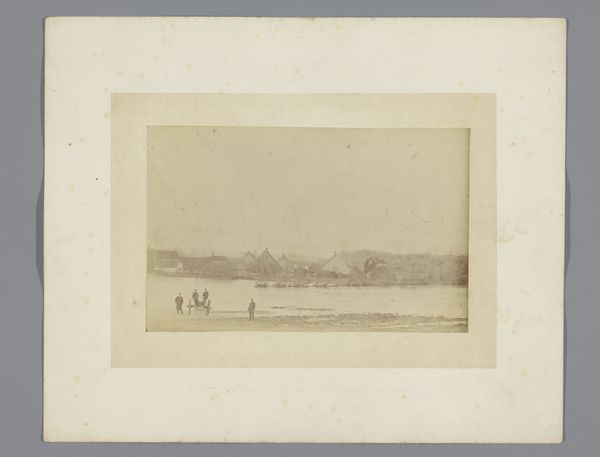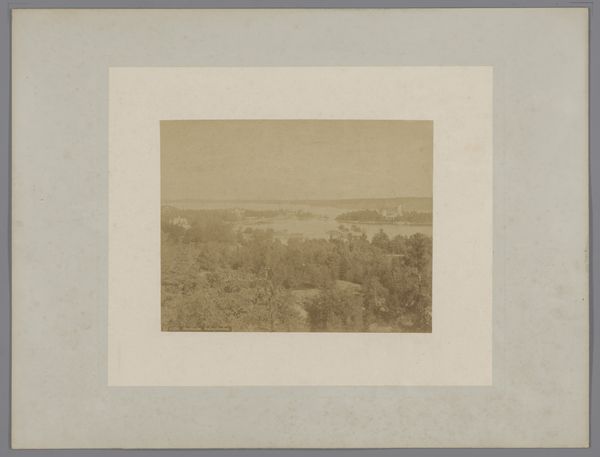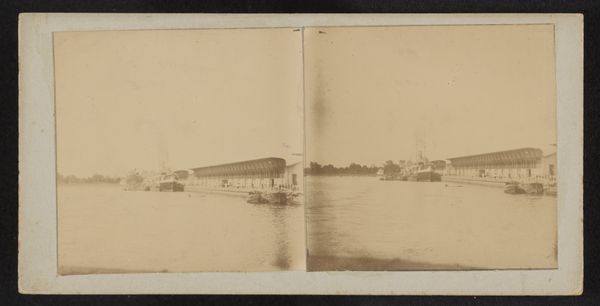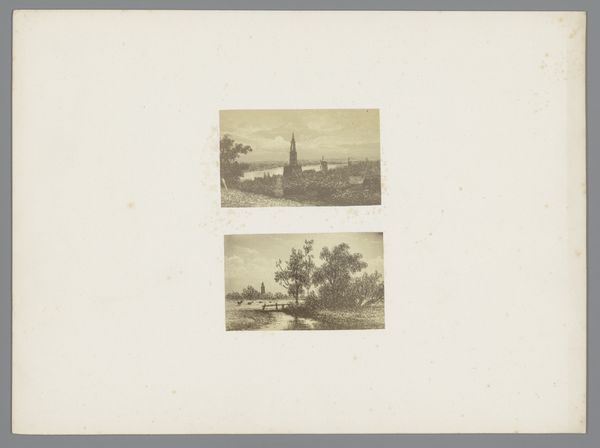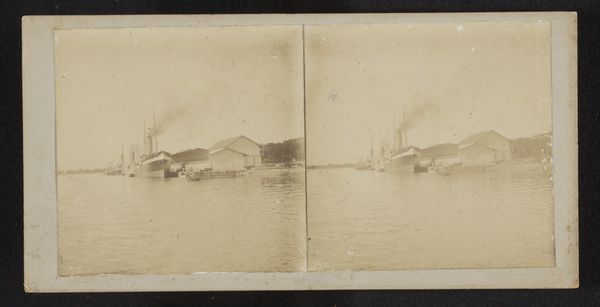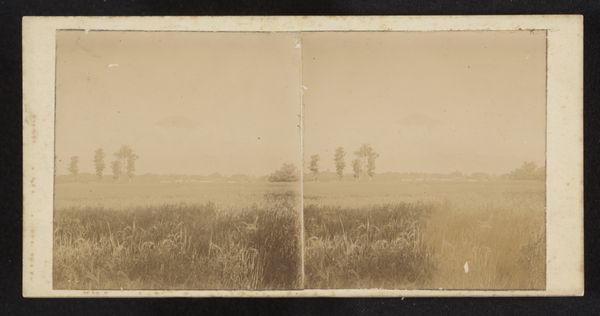
photography, gelatin-silver-print
#
landscape
#
photography
#
gelatin-silver-print
Dimensions: height 80 mm, width 80 mm, height 88 mm, width 178 mm
Copyright: Rijks Museum: Open Domain
Curator: Before us we have a photograph titled "Riviermonding in zee," which translates to "River Mouth at Sea." It's a gelatin silver print made sometime between 1900 and 1922 by Robert Julius Boers, and currently held in the Rijksmuseum. Editor: It’s interesting. Immediately I get this almost ghostly vibe, like a memory fading at the edges. The sepia tones really contribute, right? It’s a hazy, quiet scene. You can almost feel the humidity. Curator: Indeed. Consider the historical context. During the late 19th and early 20th centuries, landscape photography served not just as documentation but as a reflection of colonial power dynamics and romanticism, often shaping perceptions of distant lands. Editor: I see what you mean. The lack of figures gives it that "untouched paradise" feel – carefully constructed, I imagine. Like these kinds of images were definitely selling an idea of a place as much as showing it. Curator: Precisely. Early landscape photography, especially within a colonial context, often romanticized these territories, downplaying or erasing indigenous presences to promote a narrative of European discovery and control. Editor: But you know what strikes me is how…still it feels. Like a meditation almost. Which might be part of that colonial gaze, this passive, observant outsider. Does it almost flatten any sort of interaction or real presence from the photograph? Curator: That's a poignant reading. The tranquility in Boers' photograph, devoid of immediate human activity, may underscore that distance and reinforce the gaze of the colonizer onto a seemingly passive land. This contrasts greatly to how Indigenous populations lived. Editor: Absolutely. It’s weird, this calmness – it makes me question who gets to be still, who's afforded that luxury. Still, I appreciate its aesthetic, like a peaceful postcard from a troubling past. Curator: And viewing through a contemporary lens, one can appreciate how art like this can illuminate and inform discourses surrounding identity and politics within complex legacies. Editor: Yes. It gives us something to examine, something to learn and reflect upon, so the beauty is never just...easy.
Comments
No comments
Be the first to comment and join the conversation on the ultimate creative platform.
